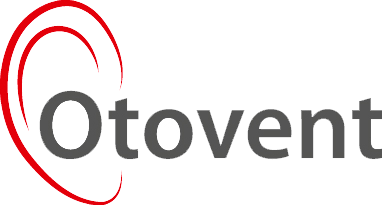Otovent®
Say Goodbye to Pain after Diving.
Middle Ear barotrauma is the most common injury divers suffer. Barotitis is an acute inflammation, which occurs due to that a negative pressure builds up in the middle ear. This occurs when there is a change in surrounding atmospheric pressure, usually upon descent. The characteristics of Barotitis are pain and temporary hearing impairment in the affected ear. Occasionally there may be vertigo and a hearing impairment of a more permanent nature. Typically, barotraumas of descent is called a "squeeze" or "block", and barotraumas of ascent is called a "reverse squeeze" or "reverse block. " With OTOVENT®, equalizing the pressure is easy before and after a dive.
Negative Ear Pressure Equalization
The problem usually arises in connection with descent. As a diver descends, water pressure increases. A diver must equalize the air pressure in his middle ear with the pressure in his outer ear or he risks an ear barotrauma If the Eustachian tubes are blocked or even partially obstructed during a dive, such as by cold or allergy symptoms, it can be impossible to equalize. As pressure builds on the body, the Eustachian tubes collapse, making it impossible to equalize the middle ear to the external pressure on the eardrum. When this happens, the body will attempt equalize the pressure by releasing plasma or blood into the middle ear. This causes the feeling of fullness divers occasionally feel. If a diver descends without equalizing his ears, the increased pressure in the outer ear relative to the middle ear flexes the eardrum inwards. The discomfort felt as the eardrum bends inwards is called a squeeze.
The Otovent® Method
The majority of individuals suffering pain from negative pressure in the middle ear can simply use the OTOVENT® balloon in order to equalize the negative pressure. The method is simple to perform and is also suitable for children from the age of 3 years. The OTOVENT®-method can easily be treated as a game. Practice by blowing up the balloon a couple of times via each nostril using the nose-adapter before flying (see below). It is advisable to begin equalizing the pressure when descending is announced. Best results are achieved where equalization is commenced before the negative pressure in the ear is experienced.
How to use Otovent®?
- Connect the balloon to the nose piece. Hold the round part of the nose piece firmly against the right nostril with the right hand. Press the left nostril closed with the left hand.
- Inhale deeply, close the mouth and the inflate the balloon until it is the size of a grapefruit, by blowing through the nostril.
- Repeat the procedure with the left nostril.
When the balloon is inflated to a grapefuit size the technique is correct and therefore optimum benefits from the treatment will be gained. You will know that the treatment works if you or your child experiences a pressure increase and/or a "pop" in the ear. If the ear does not “pop” upon inflation, the patient should swallow as the balloon deflates back through the nasal passage way.
Note! Maximum 20 inflations per balloon.
Relief you can trust.
No Patient injury or negative side effects have been reported using Otovent. This safety record gives you confidence with the results you expect for your child and you! The Otovent balloons in the pack are carefully manufactured to achieve the therapeutic pressure required to open the eustachian tube. When used correctly, the Otovent method provides excellent results in the treatment of children and adults with Secretory otitis media/Otitis media with effusion (SOM/OME). 50% of children (from approximentally 3-4 years) achieve equalization or a lower negative pressure in the middle ear.
